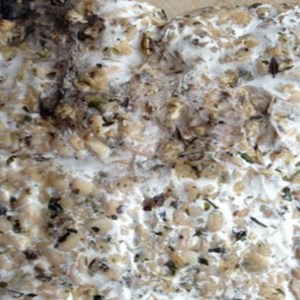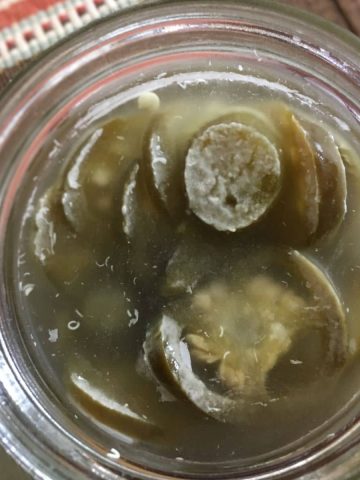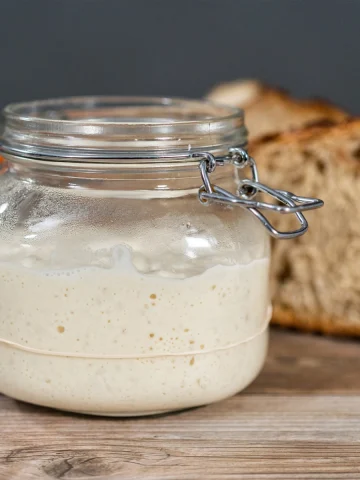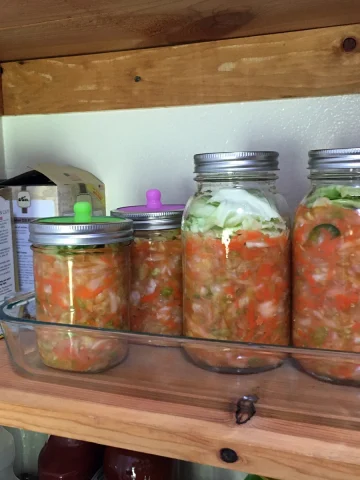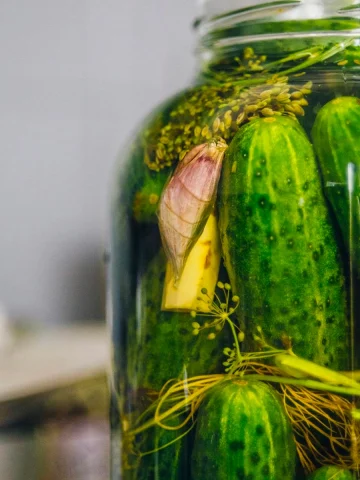Tempeh is a fermented soybean product found in abundance in the diets of vegetarians and vegans. It is a good source of protein and can easily absorb other flavors and aromas during the cooking process.
With so many people becoming more meat-conscious and the rising popularity of initiatives like “Meatless Monday,” tempeh is quickly becoming a delicious high-protein alternative.
However, no matter how popular tempeh has become, the appearance of tempeh can be a little jarring for a newbie.
One big question that comes up repeatedly is: What are those black spots on my tempeh?
Quickly followed by...
Is it safe to eat?
So, what should you do if you bought tempeh for the first time and you find it covered in greyish black spots after opening the package?
The tempeh does not smell off, but it looks moldy, and you find yourself wondering if you can still eat it.
The answer is yes, you can. The black spots on tempeh are perfectly normal and safe to eat.
Why does tempeh form black spots on it?
If you use homemade, you might notice black spots on tempeh forming on the corners in its packaging or around the air holes. You might also notice the mycelium turning a greyish color.
The spots form as part of the fermentation process by the Rhizopus spores.
They usually appear when the tempeh has been incubated a little too long and indicates that the tempeh has reached maturity (the spores sprout seeds).
Eating is perfectly safe as long as there are no signs that the tempeh has gone off, which is discussed next.
So, if greyish black spots are okay to eat, how can you tell when tempeh is bad, and how long can you store it before it starts to go off?
The following section will look at some of the basic questions tempeh-newbies ask and include some helpful tips on preparing your fresh tempeh at home.
How to Tell if Tempeh has Gone Bad
How do you tell when tempeh has gone bad? The best way is to smell it. If the tempeh smells strongly of ammonia or alcohol, it has most likely gone bad.
Tempeh should not have any bacterial or mold growth other than those created by the Rhizopus spores. If there’s mold on your tempeh that’s not white or greyish-black, you should discard it.
If the tempeh is slimy and the structure limp and mushy when you pick it up, it is another sign that the tempeh has gone off.
What does good tempeh look like?
A fresh block of tempeh should be firmly packed with the white mycelium filaments holding together throughout the cake. There should not be any openings between the beans.
A block of tempeh should be lifted easily without breaking and have a nutty, earthy, and mushroomy aroma. When the tempeh is sliced, it should not crumble but produce a neatly packed thin slice.
Where does tempeh come from?
Tempeh originates from the small Indonesian island of Java, close to Bali. The residents of Java have been using soybeans as a staple as far back as the 12th century.
After the arrival of the Chinese in the late 17th century, the Javanese were introduced to the process of making tofu.
Tofu is a firm but soft product produced from soymilk. It is, however, not fermented like tempeh.
Tempeh was discovered, according to legend, when discarded soybeans from the tofu-making process came into contact with spores, kickstarting fermentation.
What exactly is tempeh?
Tempeh is a fermented food, usually made from soybeans. Other legumes can also be used, and even grains can be added. Tempeh is a solid cake-like structure, typically white or cream-colored, with some small grey or black spots on the surface.
It has a pleasant mushroomy and nutty flavor with deep savory undertones. It is higher in protein than tofu.
How is tempeh made?
Simply put, tempeh is prepared by using soybeans and a tempeh starter and leaving it to ferment for two days in a warm area or incubator.
Preparing tempeh is relatively easy, and most people opt to make their tempeh at home rather than buying mass-produced tempeh made from GMO soybeans.
The first step is to par-boil the soybeans in hot water, leaving it to cool to room temperature, and let it stand for 8–16 hours.
After that, the beans will have to be dehulled and split. This is done by rubbing the soft beans against each other until the hulls come off.
Next, vinegar or lactic acid is added to the beans to help start the fermentation process, and the beans can be boiled again for a few minutes.
Once the beans have cooled and dried completely, the tempeh starter is added. The tempeh starter contains spores of either Rhizopus oligosporus or Rhizopus oryzae that the beans will be inoculated with.
The beans are spread out in a layer in a container with good ventilation and kept at a controlled temperature of 85–90 degrees.
The spores create white mycelium growth between the beans, weaving it into a thick white cake.
What are the benefits of eating tempeh?
Tempeh is one of the healthiest meat alternatives around. It is high in protein which helps you to feel fuller for longer, and a great source of non-dairy calcium.
Tempeh also contains prebiotics that helps the growth of beneficial bacteria in your gut.
Soybeans are packed with phytonutrients. Isoflavones are a type of phytonutrient found in soybeans that can have possible cholesterol-lowering effects.
Isoflavones also have antioxidant activity, which can help fight the effects of chronic disease and inflammation.
Tempeh is packed with vitamins and minerals and a good copper, phosphorus, and manganese source. It also contains the B vitamins niacin and riboflavin.
Does tempeh need to be cooked?
There are so many creative ways you can use tempeh in meals. Tempeh is best when it is steamed or cooked using methods like stir-frying, shallow or deep-frying, or even just simmering it in a pan with a bit of water.
Tempeh easily picks up other flavors, making it great for marinating.
When the tempeh is fried, it can become wonderfully crispy with a deep nutty taste. You can also eat tempeh raw; it will have a clear earthy taste.
How long can I store tempeh?
Tempeh can keep in the fridge for about a week, at most ten days before it starts degrading. If you think you won’t be able to finish your block of tempeh before it starts degrading, you can always put it in the freezer.
Tempeh freezes very well and can be kept in the freezer for up to 10–12 months. If you want to eat frozen tempeh, steaming is the best way to thaw it.
How can I make my tempeh safely at home?
Tempeh can easily be prepared at home. Although, it is not as easy to make as sauerkraut or the more simple fermentation recipes.
After a few tries, you will quickly get the hang of it and be able to enjoy your very own fresh nutty-tasting homemade tempeh.
An essential factor in making tempeh at home is keeping the tempeh at the ideal temperature between 85° and 90°F for 24 to 48 hours.
If the temperature is not warm enough, the tempeh spores may not grow, and you may get unwanted bacteria. Likewise, if it is too hot, the spores may die.
I suggest using an electric food dehydrator (available on Amazon) to control the temperature. This one is great because every other rack can be removed to fit a bulkier size food, such as tempeh.
If you live in a warmer climate, you can let it sit on the counter, and it will be fine. Think Indonesia temps; after all, that is where tempeh originated.
Suppose you are interested in making tempeh at home. In that case, I highly suggest buying the cookbook, Miso, Tempeh, Natto & Other Tasty Ferments: A Step-by-Step Guide to Fermenting Grains and Beans by Kristen Shockey.
I love this book because of its beautiful imagery and clear step-by-step instructions. The Shockey’s break down the steps for the beginner fermenter extremely well.
People are often a little intimidated when fermenting their food. No one wants to make themselves sick. This book takes away the intimidation of trying something new.
Conclusion
Tempeh is a nutritious, high-protein meat alternative with a great nutty taste. As a fermented food, it provides a dose of probiotics that promote good gut health and digestion. It’s easy to prepare at home, or you can buy it from a trusted health food store.
And don’t worry if your tempeh has black or grey spots. As long as it does not smell off, you can still enjoy it raw, steamed, or fried.
The information on this website is for educational purposes only. It has not been evaluated by the FDA and is not intended to diagnose, treat, prevent, or cure any disease. You assume full responsibility and liability for your actions.
FTC Disclosure: As an Amazon Associate, Fermenters Kitchen earns from qualifying purchases. Fermenters Kitchen receives a small commission on all purchases made through Amazon links in our posts.

